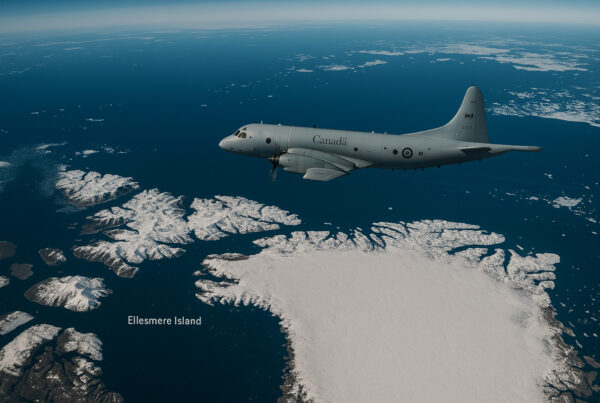The piece below is an article written by Dr. Peter Vincent Pry which originally appeared on Newsmax on July 13, 2021. Check out the original here
Generations of U.S. and allied policymakers, strategists, academics, and the general public have been conditioned by arms control theory, which is unique to our strategic culture, to measure our security against nuclear war by the “nuclear balance”—most simply, comparing the number of U.S. nuclear weapons to those of potential adversaries.
According to this simplistic paradigm, the U.S. is safer and more likely to deter nuclear conflict as long as it maintains rough parity in the nuclear balance with its closest peer competitor: Russia.
So, the New START Treaty limits the U.S. and Russia to 1,550 nuclear warheads deployed on intercontinental delivery systems (ICBMs, SLBMs, bombers) on the assumption that equality in numbers of nuclear weapons contributes to strategic stability, deterrence, and peace.
Furthermore, by the logic of arms control theory about the nuclear balance, the U.S. should be safer and even more likely to deter nuclear conflict against nations like China and North Korea, whose nuclear arsenals are numerically far inferior to the United States.
Consequently, responding to the recent discovery that China is building some 145 new ICBM silos, the press has been quick to remind and reassure the public that the U.S. is still far superior to China in the nuclear balance. For example, Kyle Mizokami writes in Popular Mechanics (8 July 2021):
“China, the fifth country to develop nuclear weapons, now maintains an arsenal of between 250 to 350 nukes. This contrasts to the U.S.’s [sic] arsenal of 5,800 weapons, with 1,373 deployed on missiles, bomber bases, or submarines…”
Counting the nuclear balance is an arms control imperative—but that does not mean the confidently expounded and oft repeated estimates of the U.S. Government and independent analysts are trustworthy.
The notion that we know for sure the “nuclear stockpiles” and “operationally deployed” numbers of nuclear weapons belonging to Russia, China, and North Korea is a great illusion:
–Russia, China, and North Korea’s nuclear weapons inventories, stockpiled and operational, are unknown to the U.S. Government, and estimates vary by tenfold.
–For example, Russia may have a 2-to1 advantage over the United States in operationally deployed strategic nuclear weapons, despite the New START Treaty, as its verification provisions are grossly inadequate.
–For example, the Defense Department recently estimated China has about 200 strategic nuclear weapons, the Federation of American Scientists estimates 320 weapons, Russian General Viktor Yesin estimates 1,600-1,800 weapons, and former DOD analyst Phil Karber calculates China could have up to 3,000 nuclear weapons.
–For example, North Korea up until 2017 was estimated by the International Institute for Strategic Studies to have as few as 6 nuclear weapons, 6-20 weapons was the most often cited estimate by media. But after North Korea tested an H-bomb in September 2017, the intelligence community reportedly increased its estimate to 60 weapons, and some independent analysts estimate North Korea could have over 100 nuclear weapons.
On the China nuclear threat, an excellent article “How Many Nuclear Weapons Does China Really Have?” is well worth reading.
Dr. Mark Schneider, a former Pentagon official and nuclear weapons expert, writes: “China has traditionally been extremely secretive about its nuclear forces. In 1982, Mao’s successor, Deng Xiaoping, said that China should ‘…hide our capabilities and bide our time.’”
Perhaps the truest thing ever said by Federation of American Scientists President, Hans Kristensen, is: “Only the Chinese Government knows how many nuclear weapons China has”—and this is also true of Russia and North Korea.
Intelligence, arms control, and academic communities pretend to have omniscience about the numbers of nuclear weapons deployed by adversaries, despite often being wrong, and despite extraordinary efforts by Russia, China, and North Korea to conceal their nuclear forces.
Prudent policymakers and military planners should have low-confidence in intelligence community and other estimates of the nuclear balance—and prepare for the worst.
The worst is that Russia, China, and North Korea do not think like Western arms control theorists—they think and plan like nuclear warfighters.
For example, China knows it does not need nuclear parity with the United States, an equal number of nuclear weapons, in order to prevail.
A successful counterforce attack must destroy 90% of the 400 U.S. ICBM silos, and all of 3 strategic bomber bases, 2 SSBN ports, and some other key C3I nodes—altogether fewer than 500 targets.
China’s DF-41 ICBM has 10 warheads, each with selectable yield (20, 90, 150, or 250 kilotons), and accuracy of 100 meters CEP, comparable to the accuracy of the U.S. Peacekeeper ICBM deployed in the 1980s.
At the higher yields, 400 DF-41 warheads can achieve over 90% probability of damage against 400 U.S. ICBMs, while China’s less accurate missiles can destroy the softer U.S. targets.
Thus, China already has, or is very close, to 40 DF-41 ICBMs and a first strike capability. Just having the capability may be sufficient to prevail by deterring the U.S. in a crisis or conflict.
We need to think less about arms control and more about adversary nuclear capabilities—and ours.
Dr. Peter Vincent Pry is executive director of the Task Force on National and Homeland Security, served as Director of the U.S. Nuclear Strategy Forum and on the staffs of the Congressional Strategic Posture Commission, House Armed Services Committee, and the CIA.








